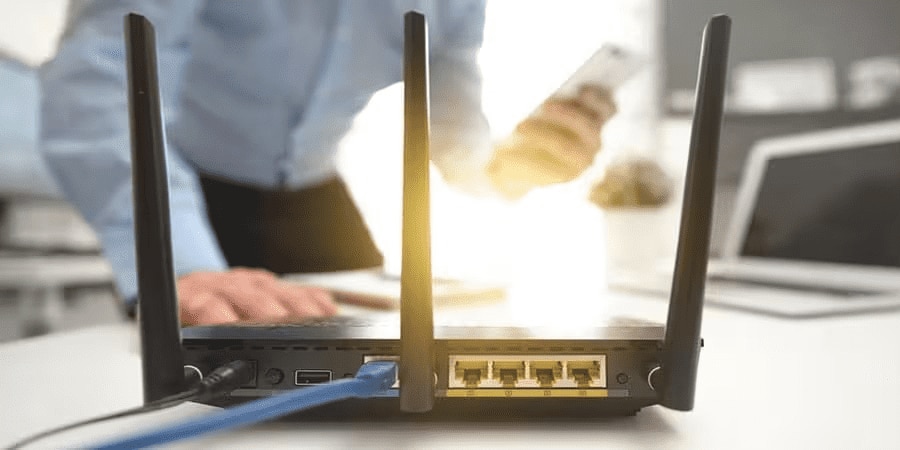Setting up and configuring a router is the foundation of establishing a reliable home or office network. Whether you’re installing a router for the first time or upgrading your existing setup, this comprehensive guide will walk you through every step of the process - from basic setup to advanced configuration options. We’ll ensure your network is not only functional but also secure and optimized for peak performance.
Essential Prerequisites Before Starting
Before beginning the router setup process, gather these critical components and information:
Required Hardware
- Your new router and its power adapter
- Ethernet cables (typically included with the router)
- Your existing internet modem
- A computer or laptop for configuration
- A smartphone for optional mobile app setup
Required Documentation
- Router user manual and quick start guide
- Internet service provider (ISP) account details
- Default router login credentials
- Network security preferences
Required Information from Your ISP
- Connection type (DSL, Cable, Fiber)
- Static IP address information (if applicable)
- DNS server settings
- PPPoE credentials (if required)
- MAC address requirements
Comprehensive Router Setup Process
1. Strategic Router Placement
The location of your router significantly impacts your wireless network performance. Consider these crucial factors:
Optimal Placement Guidelines
- Select a central location in your home or office
- Elevate the router at least 5-7 feet off the floor
- Maintain distance from metal objects and thick walls
- Ensure proper ventilation on all sides
- Position away from potential interference sources:
- Microwave ovens
- Cordless phones
- Bluetooth devices
- Other wireless equipment
Signal Interference Considerations
- Keep at least 6 feet from other electronic devices
- Avoid placing near large metal surfaces
- Consider line-of-sight to frequently used devices
- Account for multi-story coverage needs
2. Physical Connection Setup
Follow these steps precisely to establish the initial hardware connections:
Prepare Your Equipment
- Unpack all components
- Verify all parts are present
- Install any detachable antennas
- Position router in chosen location
Connect to Internet Source
- Power off your existing modem
- Wait 30 seconds for complete shutdown
- Connect an Ethernet cable from modem’s output to router’s WAN port
- Ensure cable connections are secure
Power Sequence
- Power on modem first
- Wait 2-3 minutes for full initialization
- Connect router power adapter
- Power on router
- Wait for LED indicators to stabilize
Verify Physical Connections
- Check all cable connections are secure
- Confirm power indicators are lit
- Observe internet connectivity LEDs
- Note any warning indicators
3. Initial Router Configuration
Access Router Administration Interface
Establish Initial Connection
- Connect computer via Ethernet cable (recommended)
- Alternative: Use default wireless network
- Locate default network name (SSID) on router
Access Router Dashboard
- Open web browser
- Enter router’s IP address:
- Common: 192.168.1.1 or 192.168.0.1
- Check documentation for specific address
- Enter default login credentials:
- Username: typically “admin”
- Password: usually “admin” or “password”
Initial Security Setup
- Change default administrator password
- Update router firmware if available
- Configure basic security settings
4. Basic Network Configuration
Internet Connection Setup
Configure Connection Type
- Select appropriate connection method:
- Automatic (DHCP)
- PPPoE
- Static IP
- Enter ISP-provided credentials
- Configure DNS settings
Verify Connection
- Test internet connectivity
- Check connection speed
- Verify IP address assignment
- Confirm DNS resolution
Wireless Network Setup
Basic Wireless Settings
- Configure network name (SSID)
- Select wireless channels:
- 2.4 GHz band: Channels 1, 6, or 11
- 5 GHz band: Available channels
- Set wireless mode
- Enable SSID broadcast
Security Configuration
- Select security protocol:
- WPA3 (preferred)
- WPA2-PSK (AES)
- Create strong network password
- Enable guest network (optional)
- Configure access controls
5. Advanced Security Implementation
Essential Security Measures
Administrative Security
- Change default admin credentials
- Enable HTTPS access
- Set up two-factor authentication (if available)
- Configure remote management settings
Network Protection
- Enable firewall features
- Configure DoS protection
- Set up MAC address filtering
- Enable network encryption
Access Controls
- Create access schedules
- Set up device blacklists
- Configure content filtering
- Implement parental controls
6. Advanced Configuration Options
Quality of Service (QoS)
Traffic Management
- Identify critical applications
- Set bandwidth priorities
- Configure traffic rules
- Implement device prioritization
Bandwidth Allocation
- Set upload/download limits
- Create device groups
- Configure application priorities
- Set time-based rules
Port Forwarding and DMZ
Port Forward Configuration
- Identify required ports
- Set internal/external port numbers
- Specify target IP addresses
- Enable/test forwarding rules
DMZ Setup
- Configure DMZ host
- Set security parameters
- Enable monitoring
- Test configuration
DHCP and DNS Settings
DHCP Configuration
- Set IP address range
- Configure lease time
- Set up IP reservations
- Define DHCP options
DNS Settings
- Configure DNS servers
- Set up local DNS
- Enable DNS filtering
- Configure DNS security
7. Network Optimization
Performance Tuning
Channel Optimization
- Analyze wireless environment
- Select optimal channels
- Configure channel width
- Enable band steering
Signal Strength
- Adjust transmit power
- Configure beamforming
- Enable MU-MIMO
- Optimize antenna positioning
Advanced Features
VPN Configuration
- Set up VPN server
- Configure client access
- Implement encryption
- Test VPN connectivity
Mesh Network Setup
- Position mesh nodes
- Configure backhaul
- Optimize coverage
- Test roaming
8. Troubleshooting Common Issues
Connection Problems
Physical Connection Issues
- Check cable connections
- Verify power supply
- Test alternate ports
- Inspect for damage
Network Connectivity
- Test internet connection
- Verify DNS resolution
- Check IP assignment
- Test network speed
Wireless Issues
Signal Problems
- Analyze interference
- Check channel congestion
- Test different locations
- Verify antenna position
Device Connection Issues
- Reset network settings
- Update device drivers
- Check compatibility
- Test alternate bands
9. Maintenance and Monitoring
Regular Maintenance
Updates and Patches
- Check firmware updates
- Apply security patches
- Update configuration backups
- Document changes
Performance Monitoring
- Track bandwidth usage
- Monitor connected devices
- Check error logs
- Analyze network statistics
Security Audits
Regular Security Checks
- Review access logs
- Check connected devices
- Update security settings
- Test network protection
Vulnerability Assessment
- Scan for vulnerabilities
- Test security features
- Review access controls
- Update security policies
Configuration Checklist
Initial Setup
✓ Router placement optimized
✓ Physical connections secure
✓ Power sequence correct
✓ LED indicators normal
Basic Configuration
✓ Admin password changed
✓ Firmware updated
✓ Internet connection verified
✓ Wireless network configured
Security Setup
✓ WPA3/WPA2 enabled
✓ Strong passwords set
✓ Firewall configured
✓ Guest network secured
Advanced Features
✓ QoS implemented
✓ Port forwarding configured
✓ DHCP settings optimized
✓ VPN setup complete
Frequently Asked Questions
Router Setup Basics
Q: How do I find my router’s IP address?
A: Most routers use 192.168.1.1 or 192.168.0.1. Check your router’s documentation or look for a label on the device.
Q: What’s the best security protocol for my router?
A: WPA3 is the newest and most secure protocol. If unavailable, use WPA2 with AES encryption.
Q: How often should I update the router’s firmware?
A: Check for firmware updates every 2-3 months or enable automatic updates if available.
Advanced Configuration
Q: Can I use multiple routers in my network?
A: Yes, you can extend your network using additional routers, mesh systems, or access points.
Q: How do I optimize my router for gaming?
A: Enable QoS, use a wired connection when possible, configure port forwarding for specific games, and choose optimal channels for wireless connections.
Q: Should I enable remote management?
A: Only enable remote management if necessary, and ensure strong security measures are in place.
Router Maintenance Tips
Regular Maintenance Tasks
Weekly Tasks
- Check connected devices
- Monitor network performance
- Review security logs
Monthly Tasks
- Check for firmware updates
- Review security settings
- Backup configuration
- Test network speed
Quarterly Tasks
- Comprehensive security audit
- Clean router physically
- Update access controls
- Test backup systems
Performance Optimization
Regular Monitoring
- Track bandwidth usage
- Analyze network traffic
- Monitor device connections
- Check error logs
Periodic Adjustments
- Optimize channel selection
- Update QoS settings
- Adjust wireless parameters
- Fine-tune security settings
Conclusion
Setting up and configuring a router properly is crucial for establishing a reliable and secure network. This comprehensive guide covers all aspects of router setup, from basic configuration to advanced features. Remember to regularly maintain your router’s settings and keep security features updated for optimal performance and protection.
By following this guide, you’ve learned how to make network connections to your router, how to install a router properly, and how to configure a router for optimal performance. Whether you’re setting up a new network or optimizing an existing one, these steps will help ensure your network runs smoothly and securely.
About the Author
Linsey Knerl is a contributing writer for HP® Tech Takes. Linsey is a Midwest-based author, public speaker, and member of the ASJA. She has a passion for helping consumers and small business owners do more with their resources via the latest tech solutions.
Popular HP Accessories:












1618950737757863.jpg)





